Welcome to “Top 10 Indoor Plants for Busy People,” where we blend the art of simplicity with the joy of gardening. Whether you’re just beginning your green-thumb journey or a seasoned gardener looking to add low-maintenance beauty to your space, this guide is your perfect companion.
Imagine transforming your home into a vibrant oasis without the stress of rigorous upkeep. The plants we’ve handpicked not only thrive with minimal attention but also offer practical benefits, from purifying the air to boosting your mood. Embrace the confidence that comes with growing greenery that fits seamlessly into your bustling lifestyle, and let your garden flourish with ease and delight.
Snake Plant (Sansevieria trifasciata)
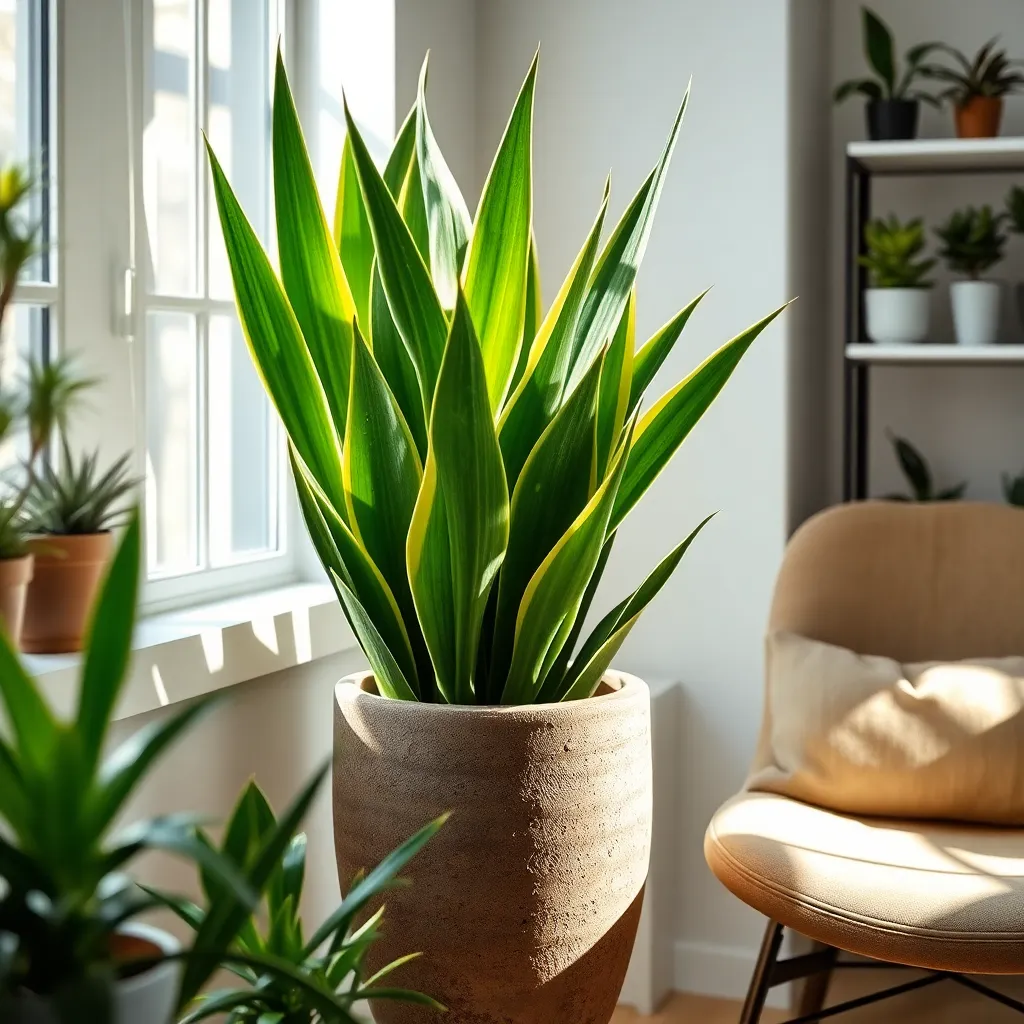
The Snake Plant, known scientifically as Sansevieria trifasciata, is a top choice for those with a hectic schedule. Its hardiness and minimal care requirements make it perfect for beginners and seasoned gardeners alike.
One of the most appealing aspects of the Snake Plant is its ability to thrive in a variety of light conditions. It can tolerate anything from low light corners to bright, indirect sunlight, making it a versatile addition to any indoor space.
For optimal growth, plant your Snake Plant in a well-draining potting mix, such as a cactus or succulent blend. This ensures that excess water can escape, preventing root rot—a common issue with these plants.
Watering is simple: allow the soil to dry out completely between waterings, which usually means watering every 2-6 weeks depending on the season and humidity levels. In colder months, reduce watering frequency even further to prevent overwatering.
Advanced tip for enthusiasts: consider rotating your Snake Plant occasionally to encourage even growth and prevent it from leaning towards a light source. Additionally, if you’re looking to propagate, simply cut a healthy leaf and place it in water until roots develop.
Pothos (Epipremnum aureum)
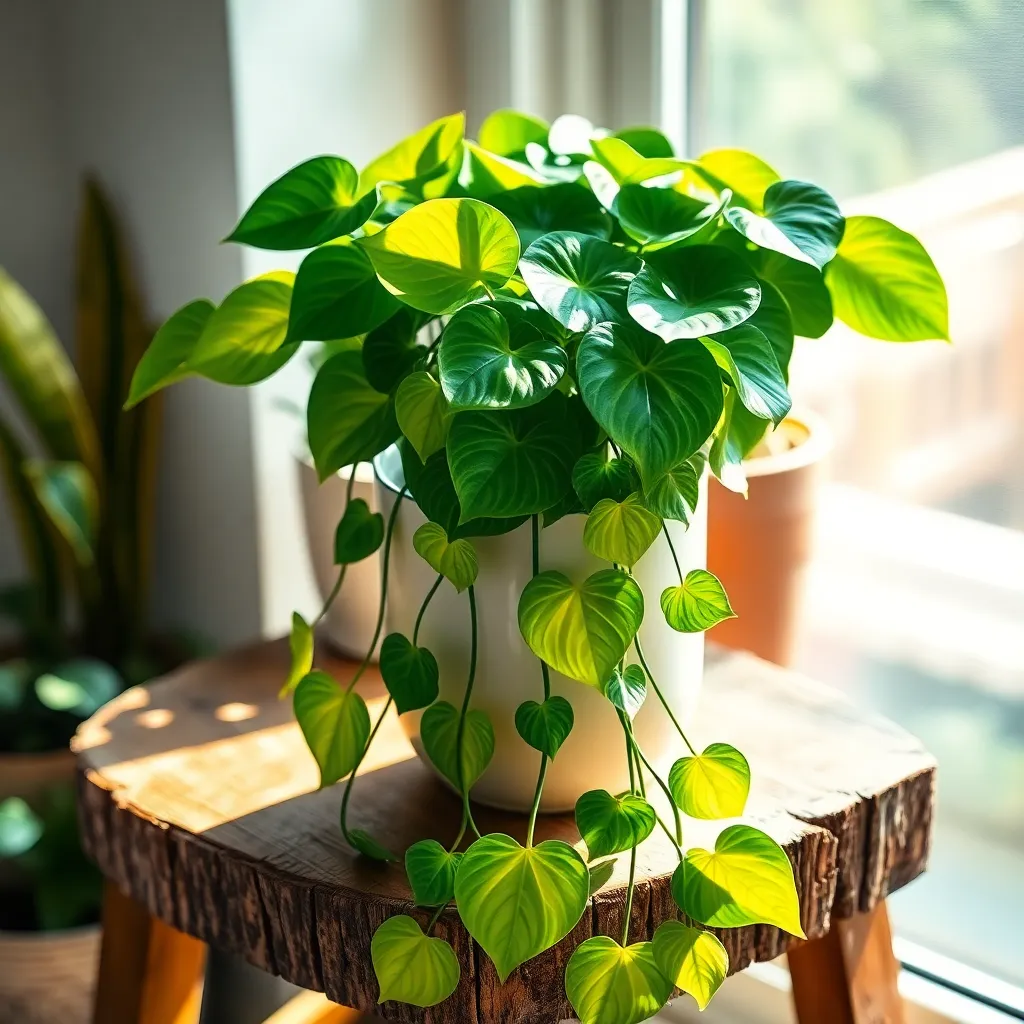
Pothos, or Epipremnum aureum, is an ideal indoor plant for those who want lush greenery with minimal effort. Known for its heart-shaped leaves, this plant thrives in various lighting conditions, making it perfect for almost any room.
Ensure your pothos is planted in a well-draining potting mix, such as a blend of peat moss, pine bark, and perlite. Watering is simple: allow the soil to dry out between waterings, which usually means every 1-2 weeks, depending on humidity.
Though pothos can tolerate low light, it grows more vigorously in bright, indirect sunlight. Rotate the plant occasionally to encourage even growth and prevent it from leaning towards the light source.
For those looking to propagate, simply cut a stem below a node and place it in water until roots develop. Once established, these new plants can be potted in soil, expanding your green collection effortlessly.
ZZ Plant (Zamioculcas zamiifolia)
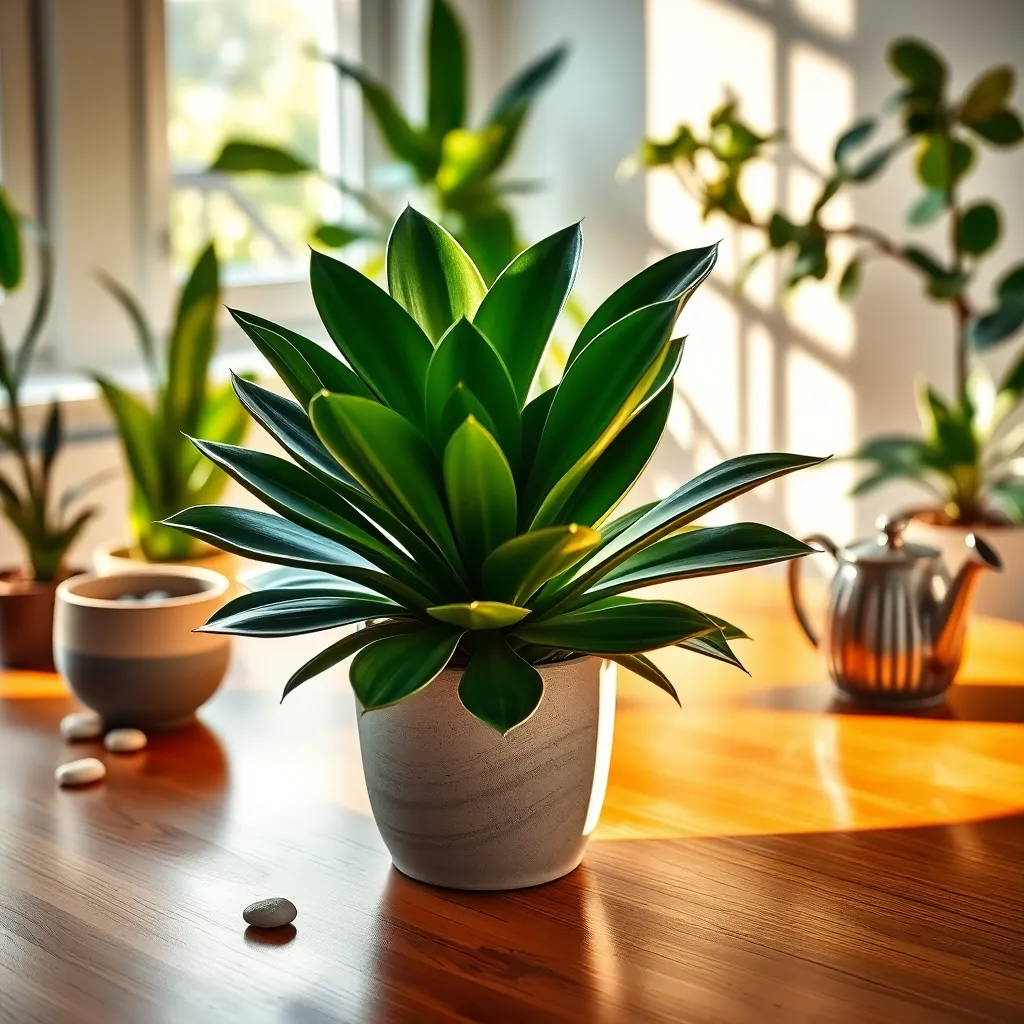
The ZZ Plant (Zamioculcas zamiifolia) is a perfect addition to any indoor space, especially for those with a busy schedule. Known for its resilience, this plant can thrive on neglect, making it a favorite for people who might not have the time to cater to more demanding species.
One of the key advantages of the ZZ Plant is its ability to tolerate low light conditions, though it will grow more vigorously in bright, indirect light. If you’re placing it in a dim corner, remember to rotate the plant occasionally to ensure even growth.
When it comes to watering, the ZZ Plant is highly drought-tolerant, thanks to its ability to store water in its thick, fleshy rhizomes. Allow the soil to dry out completely between waterings, and be cautious of over-watering, which can lead to root rot.
Use a well-draining potting mix, such as a cactus or succulent blend, to help prevent water retention. For advanced care, consider repotting your ZZ Plant every two to three years to refresh the soil and provide more space for its growing roots.
Peace Lily (Spathiphyllum wallisii)
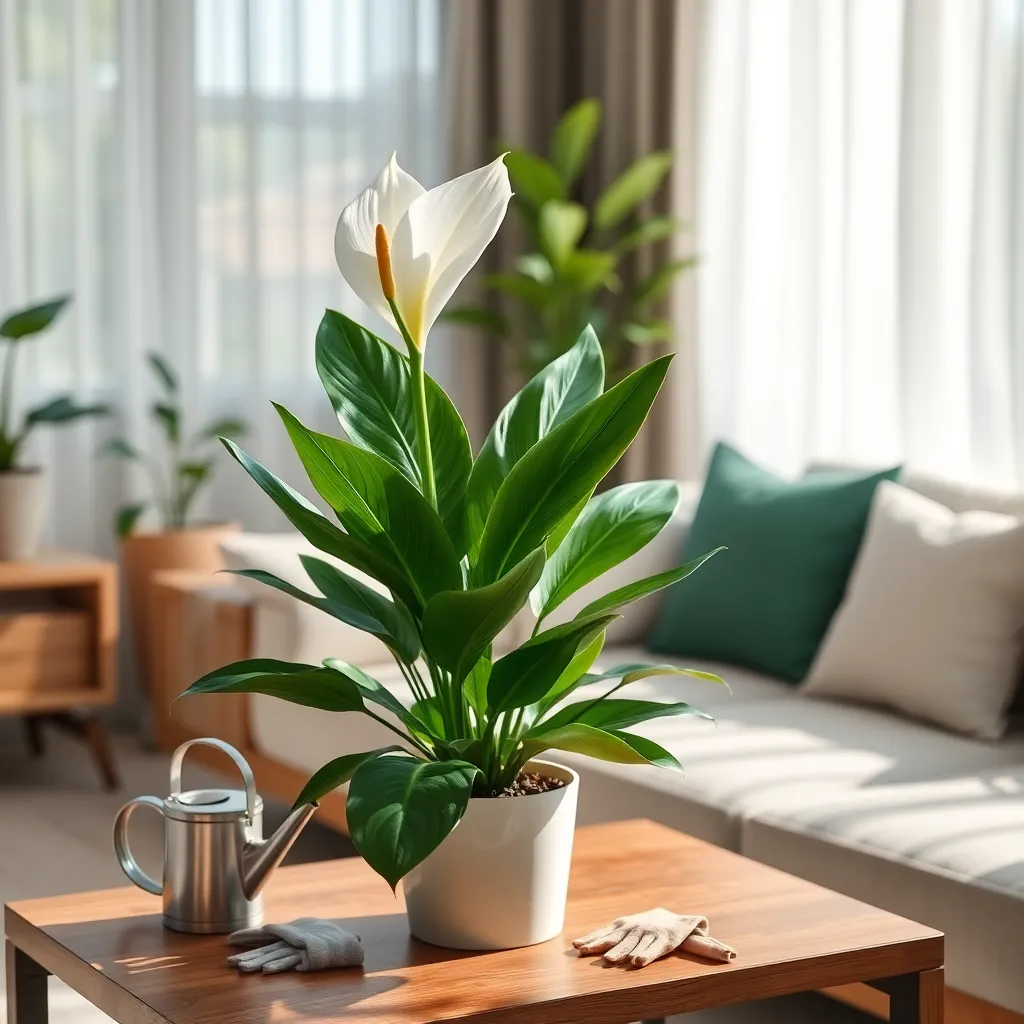
The Peace Lily (Spathiphyllum wallisii) is a popular choice for those seeking a low-maintenance plant with lush greenery and beautiful white blooms. Known for its air-purifying qualities, the Peace Lily thrives in indoor environments with minimal effort.
This plant prefers indirect light, making it perfect for offices or rooms with limited sunlight. Place your Peace Lily near a window with filtered light, but avoid direct sunlight, which can scorch its leaves.
Watering is straightforward; allow the top inch of soil to dry out before watering again. Peace Lilies are sensitive to overwatering, so ensure your pot has proper drainage to prevent root rot.
For optimal growth, use a well-draining, peat-based potting mix. Fertilize every 6-8 weeks during the growing season with a balanced, water-soluble fertilizer to encourage vibrant blooms and healthy leaves.
Advanced growers can occasionally mist the leaves to increase humidity, which the Peace Lily enjoys. Additionally, repot every 1-2 years to refresh the soil and provide space for growth, ensuring the plant remains healthy and vigorous.
Spider Plant (Chlorophytum comosum)
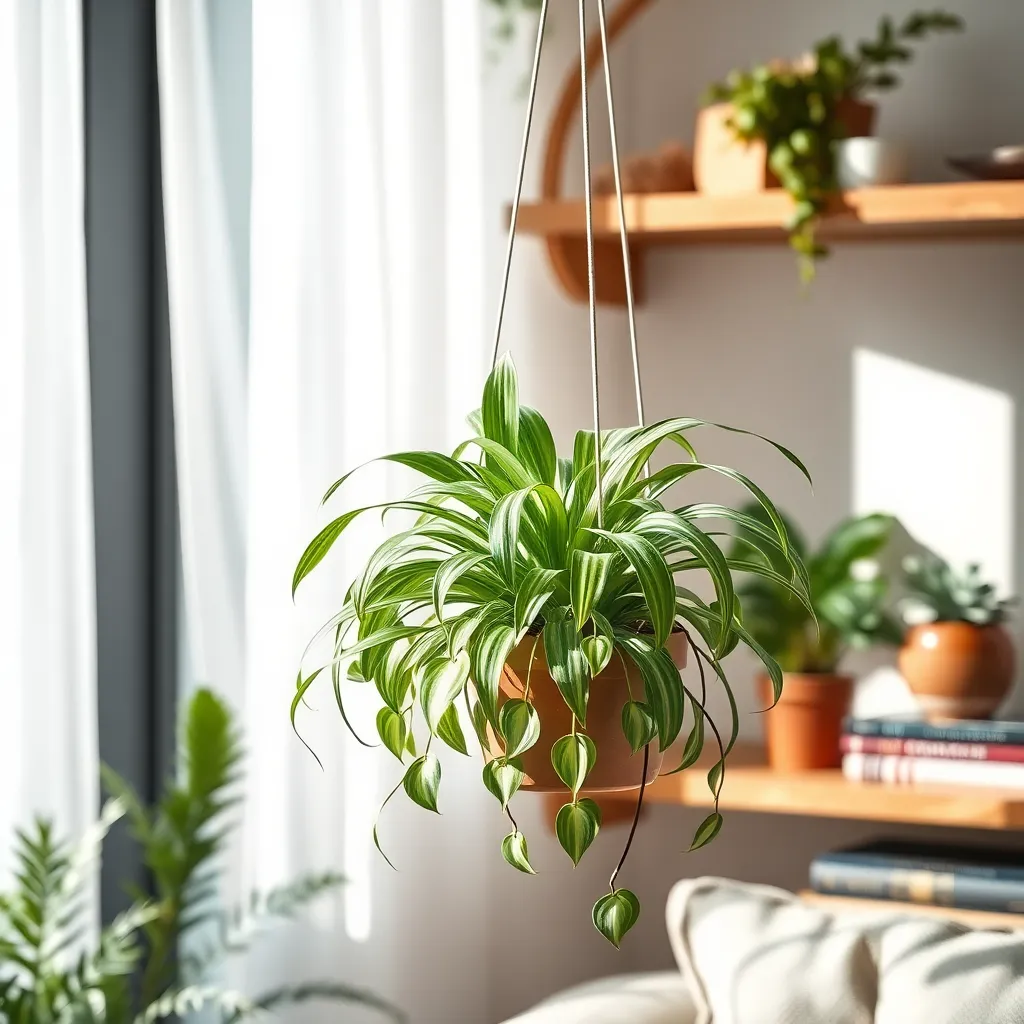
Spider Plant (Chlorophytum comosum) is a resilient and easy-to-care-for houseplant, making it perfect for busy individuals. Its lush, arching leaves create a beautiful cascading effect, adding a touch of greenery to any indoor space.
For best results, place your Spider Plant in a location with bright, indirect light, as direct sunlight can scorch its leaves. If natural light is limited, a fluorescent light will also suffice, ensuring the plant remains vibrant and healthy.
Watering this plant is straightforward: allow the soil to dry out partially between waterings to prevent root rot. Typically, watering once a week is sufficient, but adjust based on your home’s humidity levels.
An added bonus of Spider Plants is their ability to thrive in a variety of soil types, though a well-draining potting mix is preferred. Fertilize your plant every 4-6 weeks during the growing season with a balanced liquid fertilizer to encourage robust growth.
Aloe Vera (Aloe barbadensis miller)
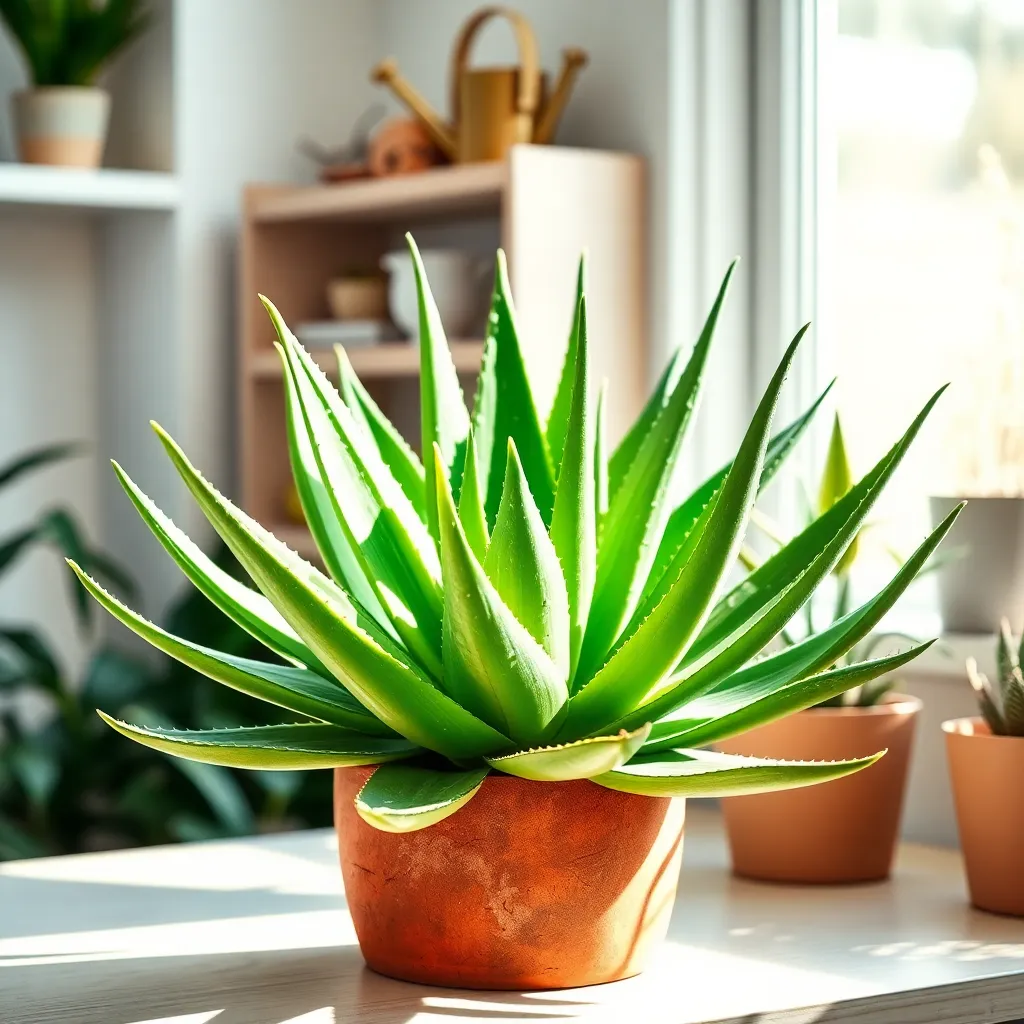
Aloe vera, known scientifically as Aloe barbadensis miller, is a resilient plant perfect for those with a hectic lifestyle. It thrives on neglect, making it an ideal choice for indoor gardeners who might forget to water regularly.
Position your aloe vera in a bright, sunny spot, as it loves plenty of light. A south or west-facing window is ideal, but be sure to rotate the plant occasionally to ensure even growth.
When it comes to watering, less is more. Allow the soil to dry out completely between waterings, typically every three weeks in the warmer months and less frequently during winter.
Aloe vera prefers a well-draining soil mix, like a cactus or succulent blend. For experienced gardeners, consider adding some perlite or coarse sand to enhance drainage further.
Occasionally, you might notice your aloe vera becoming top-heavy or outgrowing its pot. Simply repot it in a slightly larger container with fresh soil, taking care not to damage its roots.
Rubber Plant (Ficus elastica)
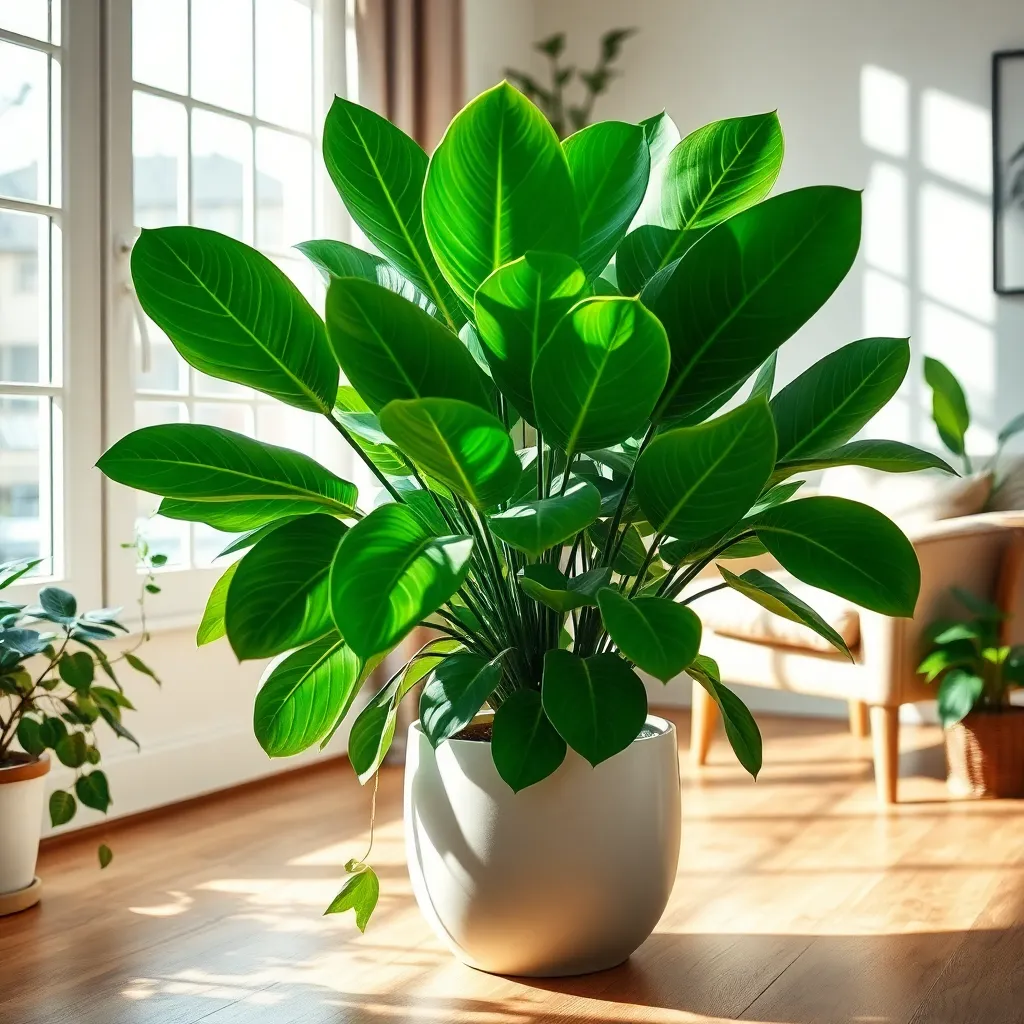
The Rubber Plant, scientifically known as Ficus elastica, is an excellent choice for busy individuals due to its low-maintenance nature. With its large, glossy leaves, it adds a touch of elegance to any indoor space while requiring minimal attention.
Position your Rubber Plant in bright, indirect light to keep it thriving. Although it can tolerate low light conditions, too much direct sunlight can scorch its leaves, so placement is key.
Watering your Rubber Plant is straightforward: allow the top inch of soil to dry out before watering. Overwatering can lead to root rot, so it’s crucial to use well-draining soil, such as a mix of peat, pine bark, and perlite.
For those looking to encourage robust growth, consider feeding your plant with a balanced liquid fertilizer every four weeks during the growing season. Regularly wiping the leaves with a damp cloth will help keep them clean and shiny, enhancing the plant’s ability to photosynthesize effectively.
Cast Iron Plant (Aspidistra elatior)
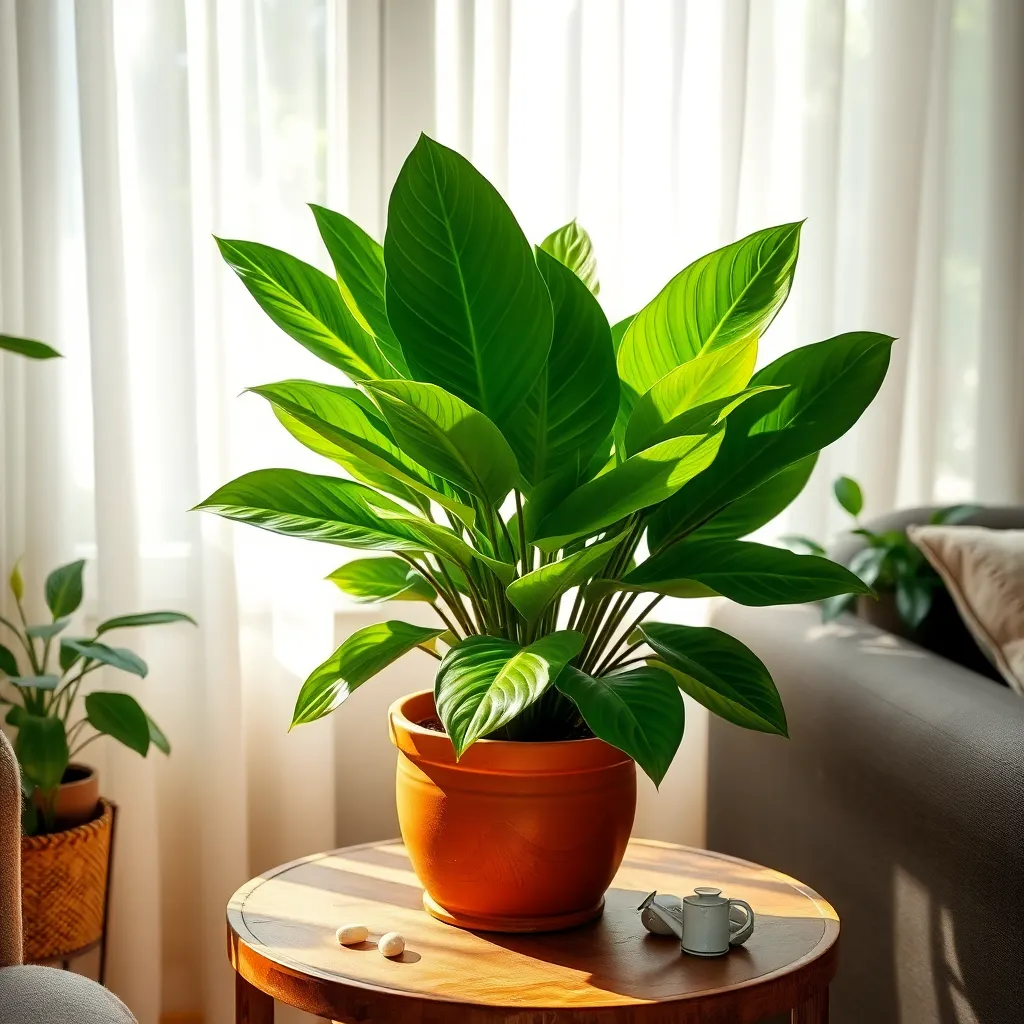
For those seeking a low-maintenance indoor plant, the Cast Iron Plant (Aspidistra elatior) is an excellent choice. Known for its resilience, this plant thrives in low light and can withstand a range of temperatures, making it ideal for busy gardeners who might occasionally neglect their plants.
When it comes to watering, the Cast Iron Plant is quite forgiving. Allow the top inch of soil to dry out before watering again, which usually means watering every couple of weeks depending on the humidity in your home.
To ensure optimal growth, use a well-draining potting mix that retains some moisture but doesn’t become waterlogged. A standard houseplant soil with a bit of added perlite or sand will work well to achieve this balance.
Even though this plant is hardy, providing a little extra care can enhance its appearance. Occasionally wipe the leaves with a damp cloth to remove dust and promote a healthy, glossy look.
Jade Plant (Crassula ovata)
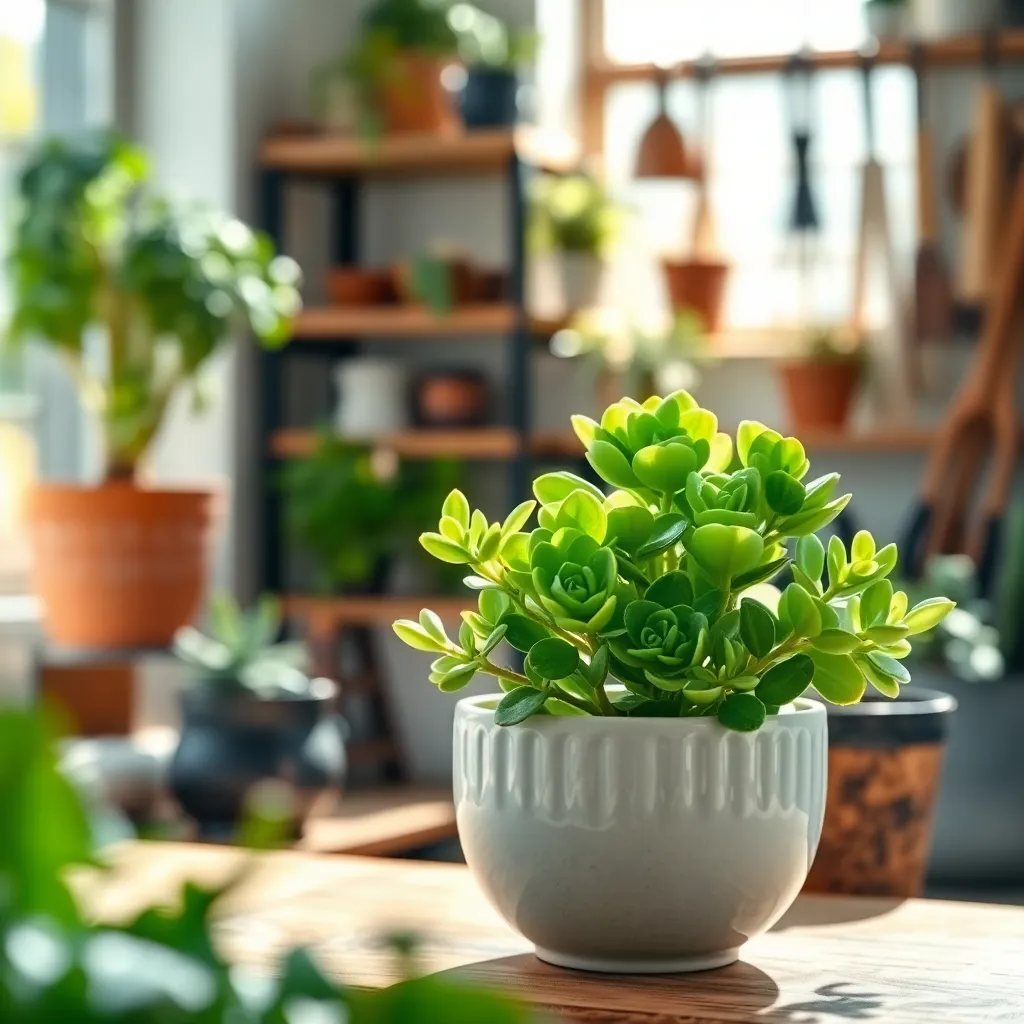
Jade Plant, also known as Crassula ovata, is a popular choice for those seeking low-maintenance indoor greenery. Its thick, succulent leaves make it highly drought-tolerant, meaning it requires infrequent watering.
To ensure your jade plant thrives, place it in a spot where it can receive bright, indirect sunlight. Direct sunlight can scorch its leaves, while too little light may cause it to become leggy and lose its compact form.
For best results, use a well-draining potting mix, such as a cactus or succulent blend, to prevent root rot. It’s also beneficial to allow the soil to dry out completely between waterings, which typically means watering every 2-3 weeks depending on your home’s humidity and light levels.
Advanced gardeners might consider periodically pruning their jade plant to maintain a pleasing shape and encourage bushier growth. Simply trim back any overly long or untidy stems using clean, sharp scissors.
Philodendron (Philodendron hederaceum)
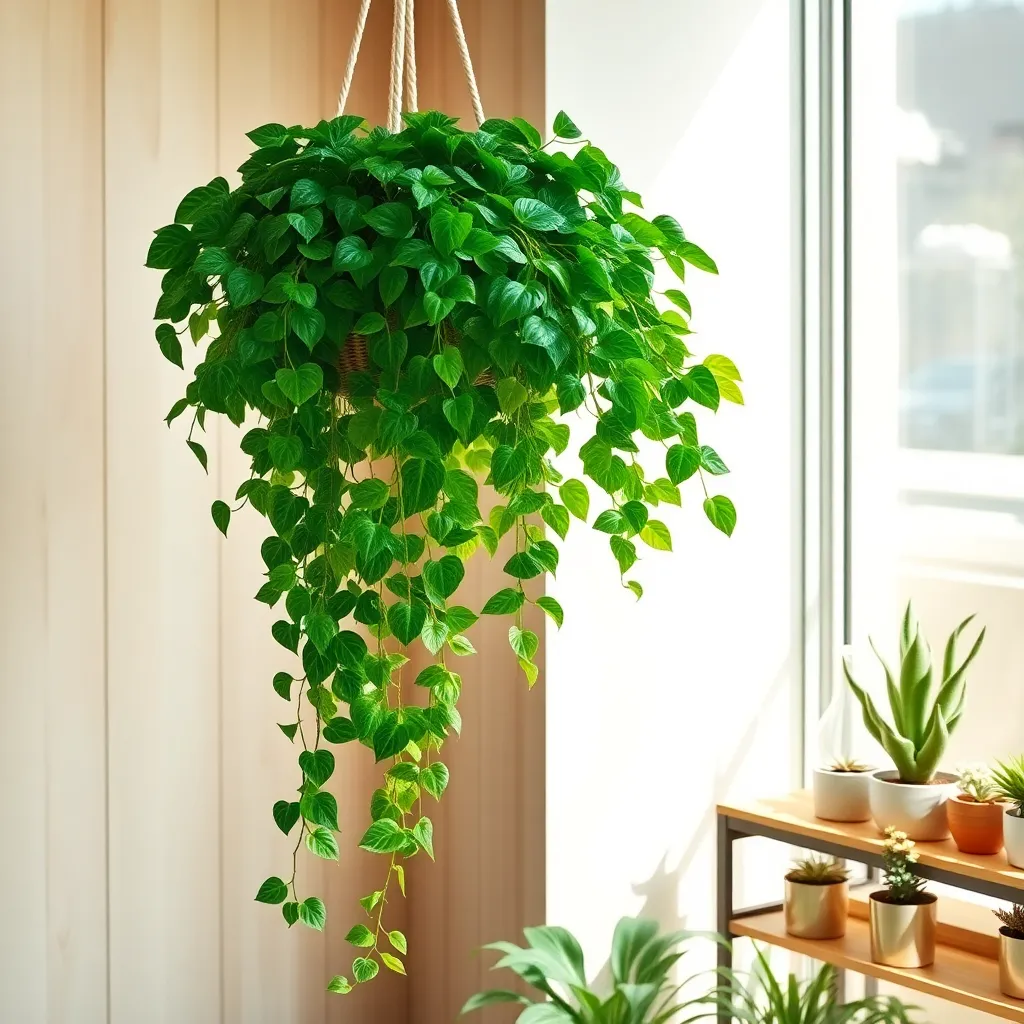
Philodendron hederaceum, commonly known as the heartleaf philodendron, is a popular choice for those with busy schedules. This resilient plant thrives with minimal care, making it perfect for beginners and seasoned gardeners alike.
Start by placing your philodendron in a spot with bright, indirect light, though it can tolerate lower light conditions. Avoid direct sunlight, as it may scorch the leaves, and ensure the plant has a stable environment to flourish.
Water your philodendron only when the top inch of soil feels dry to the touch. Overwatering can lead to root rot, so it’s crucial to use a well-draining potting mix, such as a blend of peat and perlite.
For more advanced care, consider occasional feeding with a balanced liquid fertilizer during the growing season. Pruning is simple; just trim back any leggy stems to encourage bushier growth and maintain your desired shape.
Conclusion: Growing Success with These Plants
In exploring the “Top 10 Indoor Plants for Busy People,” we’ve delved into the heart of nurturing relationships, emphasizing the importance of effort, understanding, and adaptability. We’ve highlighted the significance of communication, the need for patience, and the power of creating a nurturing environment. Additionally, the article stressed the importance of balance, resilience, and mutual growth, all of which mirror the qualities found in low-maintenance plants that thrive with minimal care yet bring life and beauty to a home. These concepts are vital not only for plant care but also for fostering thriving relationships.
As a next step, consider selecting one plant from the list to bring into your home, symbolizing your commitment to cultivating these relationship qualities. Remember, just like plants, relationships need light, attention, and time to flourish.
Bookmark this article as a handy guide for both your indoor gardening journey and your relationship growth. By saving it, you’ll have a constant reminder of these essential principles. Looking forward, let these insights inspire you to nurture relationships that are as resilient and vibrant as the greenery you choose to cultivate, enriching your life with joy and connection.
